Physical Address
304 North Cardinal St.
Dorchester Center, MA 02124
Physical Address
304 North Cardinal St.
Dorchester Center, MA 02124
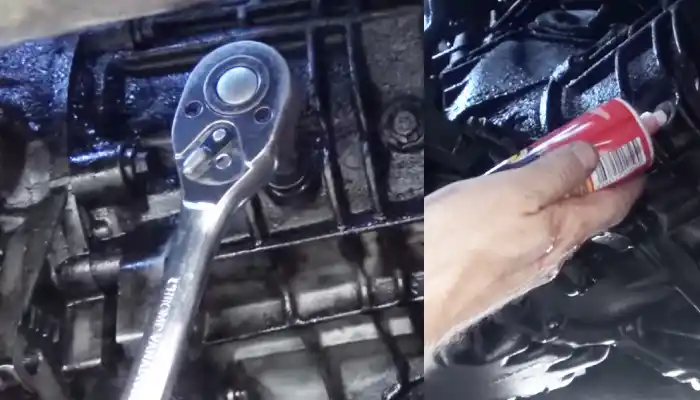
As a car owner, one of the most critical problems we face is a gearbox oil leak. When left untreated, it can cause extensive damage to our vehicles and be messy. But if we know how to stop a gearbox oil leak, we can avoid spending a fortune on repairs and maintenance.
According to my study, many car owners do not know the steps they should take to stop a leak in the gearbox properly. That’s why I’ll share the steps with you.
To stop oil leaking in your gearbox, you must identify the leaking area by inspecting the gearbox for signs of oil leakage. After that, drain the gear oil from the gearbox and clean the leaking area thoroughly to ensure a proper seal. Apply a high-quality sealant to the leaking area and allow it to dry.
Throughout this article, I will discuss these steps to stop gearbox oil leaks. I’ll also discuss why this happens so you can take preventative measures in the future.
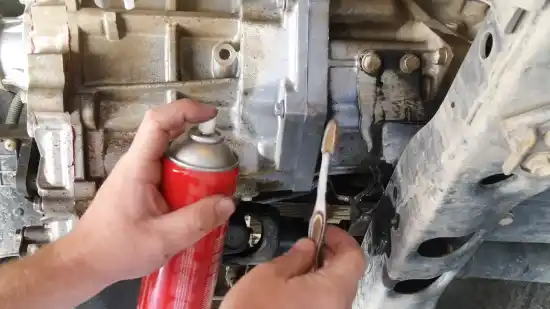
I have outlined a step-by-step guide for stopping a gearbox oil leak.
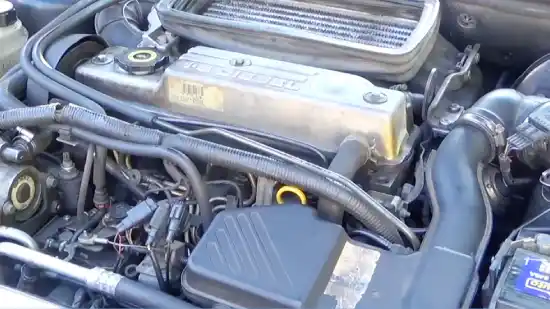
The first and most crucial step is to identify the source of the gearbox oil leak. Inspect the gearbox area for visible signs of oil to identify the leaking area. Examine the gearbox underside, looking for oil stains or drips on the surface.
Carefully check the seals, gaskets, and connections for any signs of leakage. Pay attention to any wet or oily spots on the ground beneath the vehicle. These spots can provide valuable clues about the exact location of the leak.
To work on sealing the leak effectively, you’ll need to drain the existing gear oil from the gearbox.
Locate the drain plug on the gearbox and remove it to allow the oil to drain into a suitable container positioned underneath. The drain plug is typically located at the bottom of the gearbox and is easily identifiable by its hexagonal shape.
Using a wrench or socket, carefully loosen and remove the plug, ensuring not to damage the threads. As the plug is removed, the gear oil will flow out of the gearbox and into the container. Position the oil catch pan or container directly beneath the drain plug to prevent spills or mess.
After draining the gear oil, thoroughly clean the area around the leak to ensure a clean surface for the sealant to adhere to and effectively stop the gearbox oil leak. Use a suitable cleaning solvent or degreaser to remove any residue, dirt, and grime effectively.
Start by applying the cleaning solvent or degreaser to a clean cloth or sponge and gently scrub the area around the leak. Be thorough and remove any contaminants that might hinder the sealant’s effectiveness. Once the area is clean, allow it to dry completely before proceeding to the next step.
After thoroughly cleaning the leaking area, it’s time to apply the sealant to stop the gearbox oil leak effectively. Choose a high-quality, oil-resistant sealant specifically designed for automotive applications.
Using a caulking gun or the provided applicator, carefully apply the sealant to the exact location of the leak. Ensure you cover the affected area with a thin, even sealant layer. Don’t apply too much, as excessive sealant can take a longer time to dry, causing further leaks.
Once the sealant is applied, allow it to set according to the manufacturer’s instructions. This typically takes several hours or even overnight, so be patient.
Now, fill the gearbox with gear oil to complete the process of stopping the gearbox oil leak. Locate the filler hole on the gearbox. Using a funnel, carefully pour the oil into the gearbox through the filler hole. Make sure to pour slowly and steadily to avoid spills or overfilling.
Keep an eye on the oil level, which should reach the bottom of the filler hole when the gearbox is full. Once filled, securely close the filler hole, and your gearbox should now be properly lubricated, preventing any future oil leaks.
To ensure the sealant’s effectiveness in stopping the gearbox oil leak, check for any further leaks. Run the engine for a few minutes to carefully examine the previously leaking area for any signs of oil.
If the sealant has done its job, there should be no further leakage observed. During the inspection, pay close attention to any potential leakage points.
But if you notice any new leaks or residual oil, it may indicate that the sealant didn’t fully resolve the problem, and further action may be required.
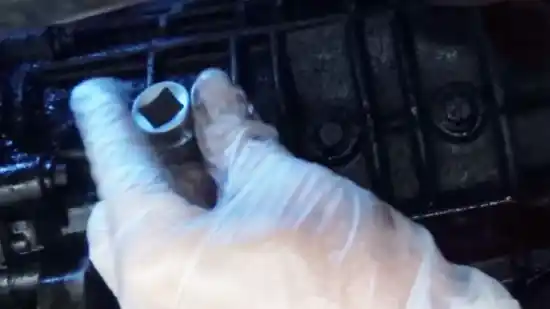
During my study, I have found several common reasons why a vehicle gearbox oil may leak.
I have found that a common reason for gearbox oil leaking is the presence of worn seals and gaskets. These essential components play a crucial role in maintaining the integrity of the gearbox by preventing oil from escaping.
Over time, seals and gaskets can deteriorate, become dehydrated, or wear out due to normal usage. When this happens, gaps or cracks may form, allowing oil to leak out.
O-rings are responsible for creating a reliable seal between the adapter plate and the pump, as well as the bell housing of the pump. Over time, O-rings can become worn out, brittle, or damaged due to exposure to high temperatures, chemicals, or mechanical stress.
When this happens, the O-rings lose their ability to seal the gearbox, resulting in oil leaks effectively. Regularly inspect the O-rings for any signs of wear or damage and replace them as necessary.
Another common cause of gearbox oil leaking is the inadequate sealing between the gear drive and the engine, specifically at the interface where the factory-installed seal is located. This seal is positioned between the gear drive and the adapter plate on the pump.
When this seal becomes worn or damaged, it can no longer effectively prevent oil from leaking out of the gearbox. Over time, the constant friction and heat generated by the gear drive and engine can cause the seal to deteriorate, leading to oil leaks.
Also, if the seal isn’t installed properly during assembly, it may not create a tight enough seal to prevent oil leakage.
When there are inadequate ventilation holes or blockages, pressure imbalances can occur between the inside and outside of the gearbox, resulting in oil leakage.
This can be problematic if the gearbox isn’t properly designed to handle these pressure differences. Poor structural design can exacerbate the issue, especially if the inspection hole cover is too thin or the casting isn’t properly annealed.
Another contributing factor is the absence of an oil return groove, which can lead to oil accumulation and eventual leakage. Therefore, addressing pressure differences and ensuring a robust structural design are crucial steps in preventing gearbox oil leaks.
Excess oil can accumulate on the shaft seal and joint surface when the gearbox is overfilled. This accumulation creates added pressure on the seals and gaskets, causing them to degrade over time.
The excess pressure can also lead to the formation of leaks at weak points in the gearbox, such as damaged seals or worn-out gaskets. Also, the excess oil can create turbulence within the gearbox, further contributing to leaks.
I’ve noticed that improper maintenance and the use of low-quality parts can contribute to gearbox oil leaks. Neglecting basic maintenance practices, such as failing to remove dirt from the joint surface or not replacing seals on time, can create gaps and openings through which the oil can escape.
Also, using low-quality spare parts, particularly oil seals and bearings, can compromise the integrity of the gearbox, making it more susceptible to leaks. These substandard parts may not have the necessary durability and tight sealing properties to withstand the gearbox demands, leading to oil leakage.
When faced with excessive gearbox leaking, my suggestion is to take immediate action to prevent any further damage or safety risks.
Shut down the machine and isolate it from any power source. Thoroughly inspect the gearbox to locate the source of the leak. This may involve removing any covers or panels to gain better access.
Once the source is identified, it’s necessary to repair or replace the damaged components causing the leak. This could involve fixing seals, gaskets, or other faulty parts. I recommend using high-quality replacement parts to ensure a proper and long-lasting repair.
When facing a gearbox oil leak, a suitable sealant to consider is Liqui Moly’s Gearbox Oil Leak Stop.
This specialized combination of active agents is designed to seal leaky manual, auxiliary, and differential transmissions. It effectively cleans and regenerates hardened rubber and plastic seals, providing a rapid and economical solution to minor leaks.
Using this sealant, you can prevent further oil leakage and extend the lifespan of your gearbox. Liqui Moly’s Gearbox Oil Leak Stop is formulated to provide a tight seal, ensuring that your gearbox remains properly lubricated and protected.
This sealant is a reliable and effective solution for addressing gearbox oil leaks, allowing you to maintain the performance and efficiency of your vehicle’s transmission system.
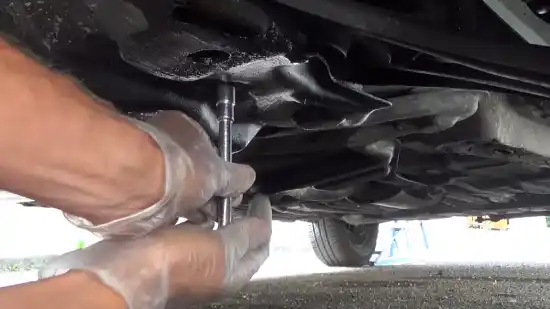
To address the issue of a gearbox oil leak, the cost to fix it can range from as little as $150 for a seal replacement (including labor cost) to approximately $1,000 for a new torque converter. The cost can vary depending on the severity of the leak and the specific repairs needed.
Remember that these are just ballpark figures, and the actual cost may differ based on factors such as the make and model of the vehicle, the location of the repair shop, and any additional parts or services required.
Getting a detailed estimate from a qualified mechanic before proceeding with any repairs is always recommended. It is possible to significantly reduce the cost of repairing a gearbox oil leak if DIY steps are feasible.
Gearbox oil leaks can be a real headache for car owners. However, address the issue as soon as possible before it causes significant damage to our vehicle. One of the things that caught my attention during my research is that fixing a gearbox oil leak is not as complicated as we think.
If you follow the steps I outlined above, you can fix the problem and save money on repairs. Remember, prevention is better than cure, so if you notice any signs of oil leaks, act quickly before it’s too late.I hope this guide has been helpful to you and encourages you to tackle the problem yourself if you are ever faced with a gearbox oil leak in the future.